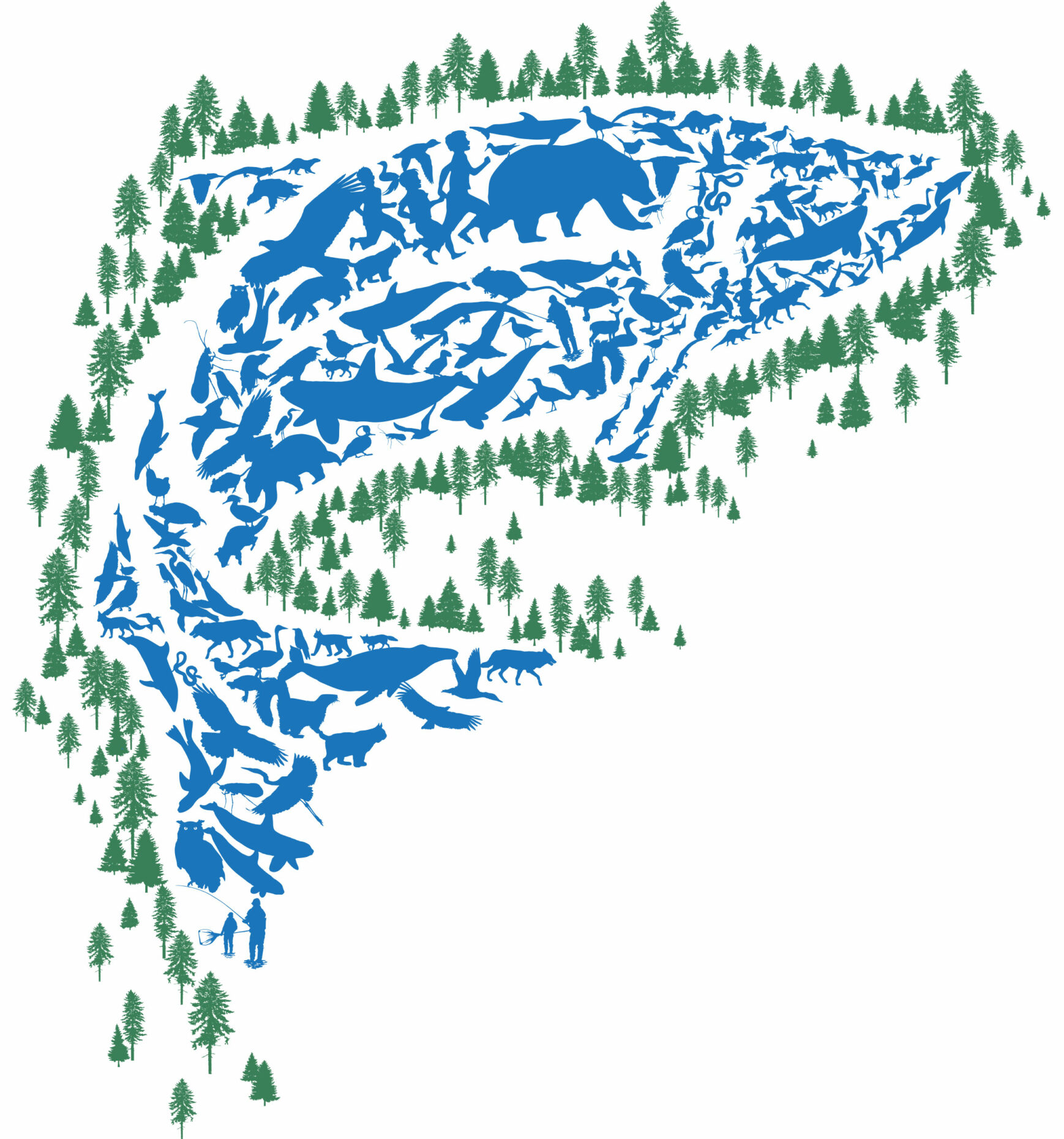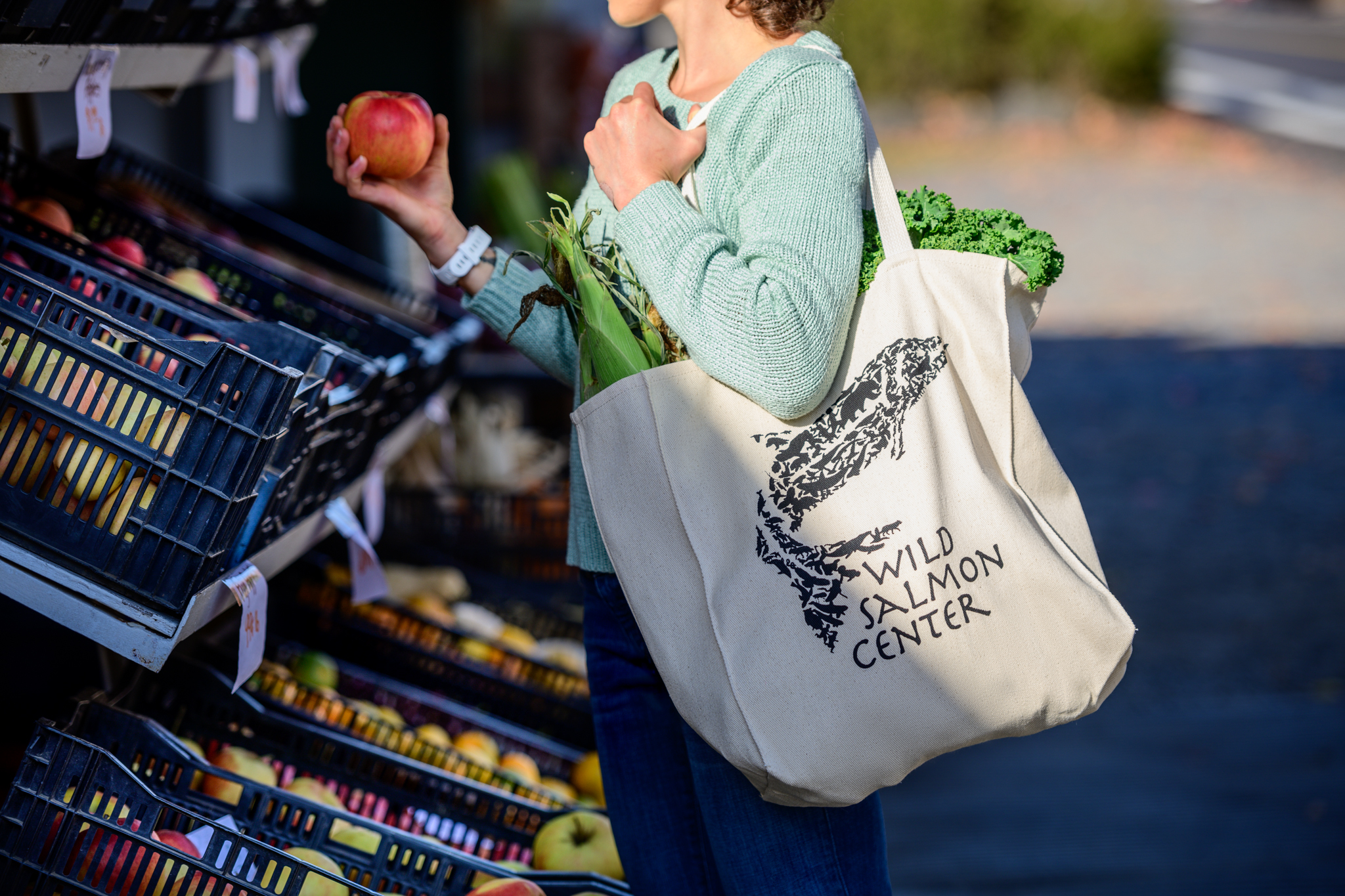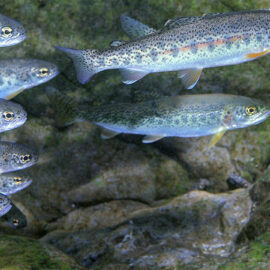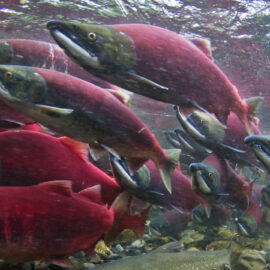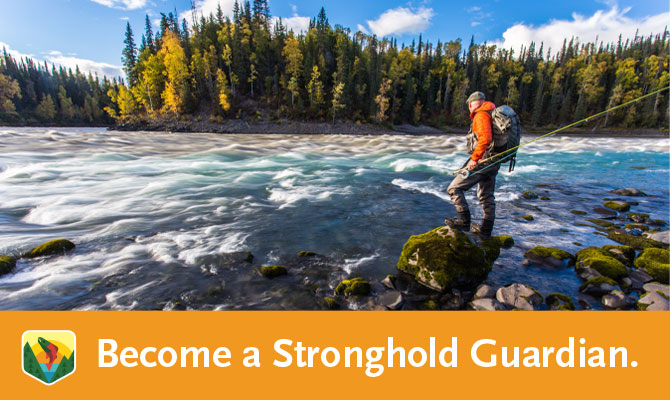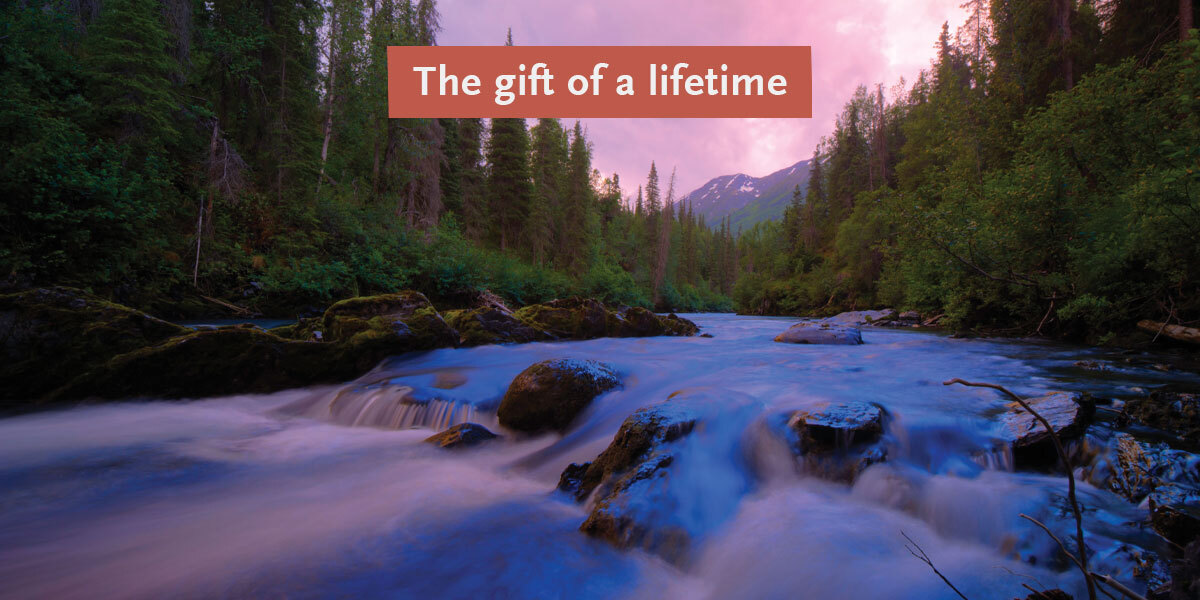Wild Salmon Center’s keystone species logo, created by Ed Hepp, is based on a study by the Washington Department of Natural Resources. The report found that at least 137 wildlife species in the Pacific Northwest alone – from caddisflies to orcas – are predators or scavengers of salmon at some stage in their life cycle. This study underscores the importance of wild salmon as a keystone species to food webs and watershed health as they transport vital nutrients and protein from the ocean to be deposited in upstream spawning grounds after they die.
Who loves salmon? Click on the salmon-hungry species hidden below to learn more.
Having any issues with the illustration? Try refreshing the page. Note: only some animals will have hidden Easter eggs.
Can you find these species? Use this handy list to find some of the animals hidden in the illustration above. Click away for fun facts about how they benefit from wild salmon and check out our Salmon School page for more fun facts and games.
- Black-tailed deer
- Blakiston’s fish owl
- Caddis fly
- California condor
- Cliff swallow
- Douglas’ squirrel
- Forest
- Gray wolf
- Great blue heron
- Grizzly bear
- Hooded merganser
- Humpback whale
- Northern steller sea lion
- Northern river otter
- Orca
- Pacific coast aquatic garter snake
- Pacific giant salamander
- People
- Raccoon
- Western pond turtle
Photo credits: Blakiston’s fish owl: Jonathan Slaght; grizzly bear: Dave McCoy; northern river otter: Sergey Gorschov; people: Ben Knight; remaining images: Alamy
Want your own Ed Hepp work of art? Check out our gear store and get your very own Wild Salmon Center custom tote bag, mug, and clothing apparel featuring our keystone species mosaic.


